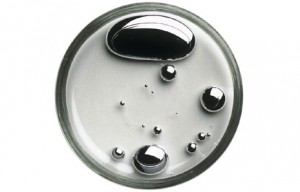A new treaty on global mercury: not much, but better than nothing
 Next week in Japan, an international diplomatic meeting will sign and adopt a new environmental treaty, the Minamata Convention on Mercury Pollution, which was finalized in negotiations earlier this year.
Next week in Japan, an international diplomatic meeting will sign and adopt a new environmental treaty, the Minamata Convention on Mercury Pollution, which was finalized in negotiations earlier this year.
In its name – and in locating the conference in Minamata and the nearby city of Kumamoto, in Kyushu– the convention commemorates the victims of Minamata disease, mercury poisoning suffered by thousands of residents in Minamata and nearby areas in the 1950s and 1960s, from eating locally caught fish and shellfish that were contaminated with organic mercury effluent from a nearby chemical factory.
The treaty has been in the works for about ten years, and the process of getting here was not easy. Through the early 2000’s the US resisted European calls for a legally binding treaty, until the Obama administration reversed this position. UNEP’s Governing Council then decided in 2009 to authorize negotiations for a binding agreement, which began in 2010.
There are a few noteworthy things about this treaty. First, it illustrates how environmental issues that are first regarded as mainly local concerns can shift to having major international dimensions as we learn more about them. Mercury is now understood as an international issue — not just in the sense that many nations face the same problems, but also in the sense that there is enough long-range transport in the environment that national measures alone can’t control it. For example, well over half of mercury deposition in the United States is now thought to come from sources outside the US. Moreover, with pretty strong controls already in place in most industrialized countries, the great bulk of current mercury sources are in developing countries – 40% in east and south Asia (nearly one third in China alone), 16% in Africa, 12% in Latin America, versus 4.5% in Europe and 3.1% in North America.
Second, mercury illustrates how environmental dynamics can complicate attempts to control. Like many pollutants, mercury has natural as well as human sources. In mercury’s case, about 10 percent of current air emissions come from natural sources (volcanoes, weathering of mercury-containing rocks), versus about 30 percent from current human sources. The remaining 60 percent are the hard part. They are “re-emissions” – mercury that was previously emitted and deposited in the environment, which re-enters the atmosphere through chemical change or simple evaporation. Although most of this large re-emitted share came from earlier human sources, there is no near-term prospect of controlling it. Control efforts target current human emissions, the only part of the budget that can be controlled. The dominance of the budget by re-emissions of mercury — mercury that might have come out of a smokestack 50 years ago — is also a stark indicator of the long time-constants of current environmental problems, and the resultant need long-term thinking about present emissions sources.
Third, attempts to control mercury give a stark picture of the difficulty and uncertainty involved in documenting sources.  The biggest human-activity source of mercury is small-scale gold mining, in which metallic (liquid) mercury is used to extract gold from the surrounding rock, then evaporated over a small burner (yuck!) to release the gold. This source was barely mentioned in the first mercury assessment in 2002. In 2008 it rose to second place behind coal burning, then in the current assessment saw its estimated worldwide source double to become the largest, at about 700 tons or 35 percent of the anthropogenic total. (A coal industry magazine celebrated the 2013 assessment with a story highlighting how coal’s share dropped in the 2013 assessment, from first to second place and from 46% to 24% of global emissions — not noting that the major reason for this drop was the huge increase in estimated emissions from another, previously under-reported source!) We still have a much weaker handle on mercury released to water than to air. The current assessment made the first attempt at global quantification with an estimate of “at least 1,000 tonnes” – about half the current estimate for air emissions but with a large uncertainty range, from 1,000 to 4,000 tonnes.
The biggest human-activity source of mercury is small-scale gold mining, in which metallic (liquid) mercury is used to extract gold from the surrounding rock, then evaporated over a small burner (yuck!) to release the gold. This source was barely mentioned in the first mercury assessment in 2002. In 2008 it rose to second place behind coal burning, then in the current assessment saw its estimated worldwide source double to become the largest, at about 700 tons or 35 percent of the anthropogenic total. (A coal industry magazine celebrated the 2013 assessment with a story highlighting how coal’s share dropped in the 2013 assessment, from first to second place and from 46% to 24% of global emissions — not noting that the major reason for this drop was the huge increase in estimated emissions from another, previously under-reported source!) We still have a much weaker handle on mercury released to water than to air. The current assessment made the first attempt at global quantification with an estimate of “at least 1,000 tonnes” – about half the current estimate for air emissions but with a large uncertainty range, from 1,000 to 4,000 tonnes.
Finally, the treaty illustrates the “everything but the kitchen sink” approach needed to try to control a pollution problem that is as pervasive and diverse as mercury. The treaty includes measures that try to control mercury releases across the whole cycle of human extraction, transformation, use, and disposal, such as:
- A ban on new mercury mines, and a 15-year limit on operation of existing mines
- Prohibition of production and trade in several classes of mercury-containing products from 2020, e.g., most batteries, switches, light bulbs.
- Measures to reduce use of mercury amalgam in dental fillings
- Regulation of international trade in metallic mercury by a prior informed consent system.
Unfortunately, for the two biggest human sources – small-scale gold mining and coal burning – the treaty includes only non-binding reduction plans with long transitions. For power plants, new plants are to install Best Available Technology (BAT) emission controls, but existing ones come only under non-binding controls with various exemptions.  For gold mining, nations just agree to develop national plans to reduce mercury use – for which there are viable alternatives, but it is awfully difficulty to regulate a sector as diffuse and informal as small-scale gold mining. There wasn’t much prospect for the treaty to specify the details of these national plans, and the few attempts that have been made to simply ban mercury use have failed. The hope is that some bootstrapping, best-practices approach, together with price pressure on mercury from squeezing supply at the minesite, will slowly drive out the practice.
For gold mining, nations just agree to develop national plans to reduce mercury use – for which there are viable alternatives, but it is awfully difficulty to regulate a sector as diffuse and informal as small-scale gold mining. There wasn’t much prospect for the treaty to specify the details of these national plans, and the few attempts that have been made to simply ban mercury use have failed. The hope is that some bootstrapping, best-practices approach, together with price pressure on mercury from squeezing supply at the minesite, will slowly drive out the practice.
In sum, the treaty is pretty weak, but it may well be about the best that could be managed on this messy problem. It could ease the way to more effective measures later. But mercury in the environment isn’t coming down anytime soon.
Reader Comments
One Reply to “A new treaty on global mercury: not much, but better than nothing”
Comments are closed.








Minimize environmental release and exposure. Where in Brazil should we go to these streams and we make collections of the organisms on the planet to regenerate the
consumed resources. But now we’re also seeing that those communities are wastewater grade 1 doing, and try and get really good scientific evidence and we’ll
go to competition.